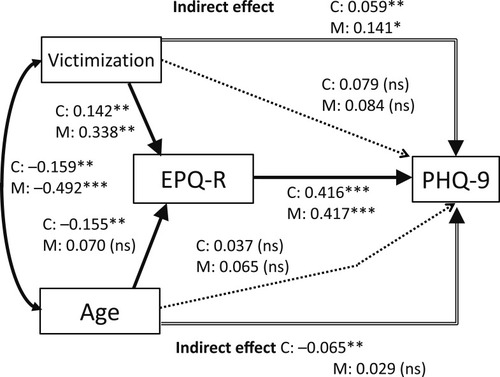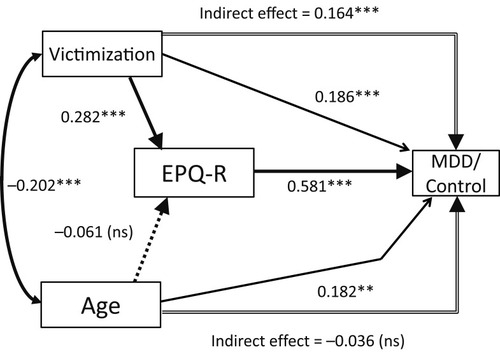Figures & data
Table 1 Comparison Of The Characteristics, PHQ-9, EPQ, And Victimization Data Of MDD Patients And Healthy Controls
Figure 1 Results of path analysis of 350 healthy adults and 82 major depressive disorder (MDD) patients with age, victimization, neuroticism (EPQ-R), and depressive symptoms (PHQ-9). The solid arrows represent statistically significant direct paths, and the dotted arrows represent nonsignificant direct paths. The arrows with double lines represent indirect paths from victimization or age to PHQ-9 via neuroticism. The numbers beside the arrows show the standardized path coefficients (minimum: −1; maximum: 1). C, healthy controls; M, MDD patients. *p<0.05, **p < 0.01, ***p < 0.001; ns, not significant.

Figure 2 Results of path analysis of 350 healthy adults and 82 major depressive disorder patients with age, victimization, neuroticism (EPQ-R), and the distinction of MDD (control = 1, MDD = 2). The solid arrows represent statistically significant direct paths, and the dotted arrow represents the nonsignificant direct path. The arrows with double lines represent the indirect paths from victimization or age to the distinction of MDD via neuroticism. The numbers beside the arrows show the standardized path coefficients (minimum: −1; maximum: 1). **p < 0.01, ***p < 0.001; ns, not significant.

